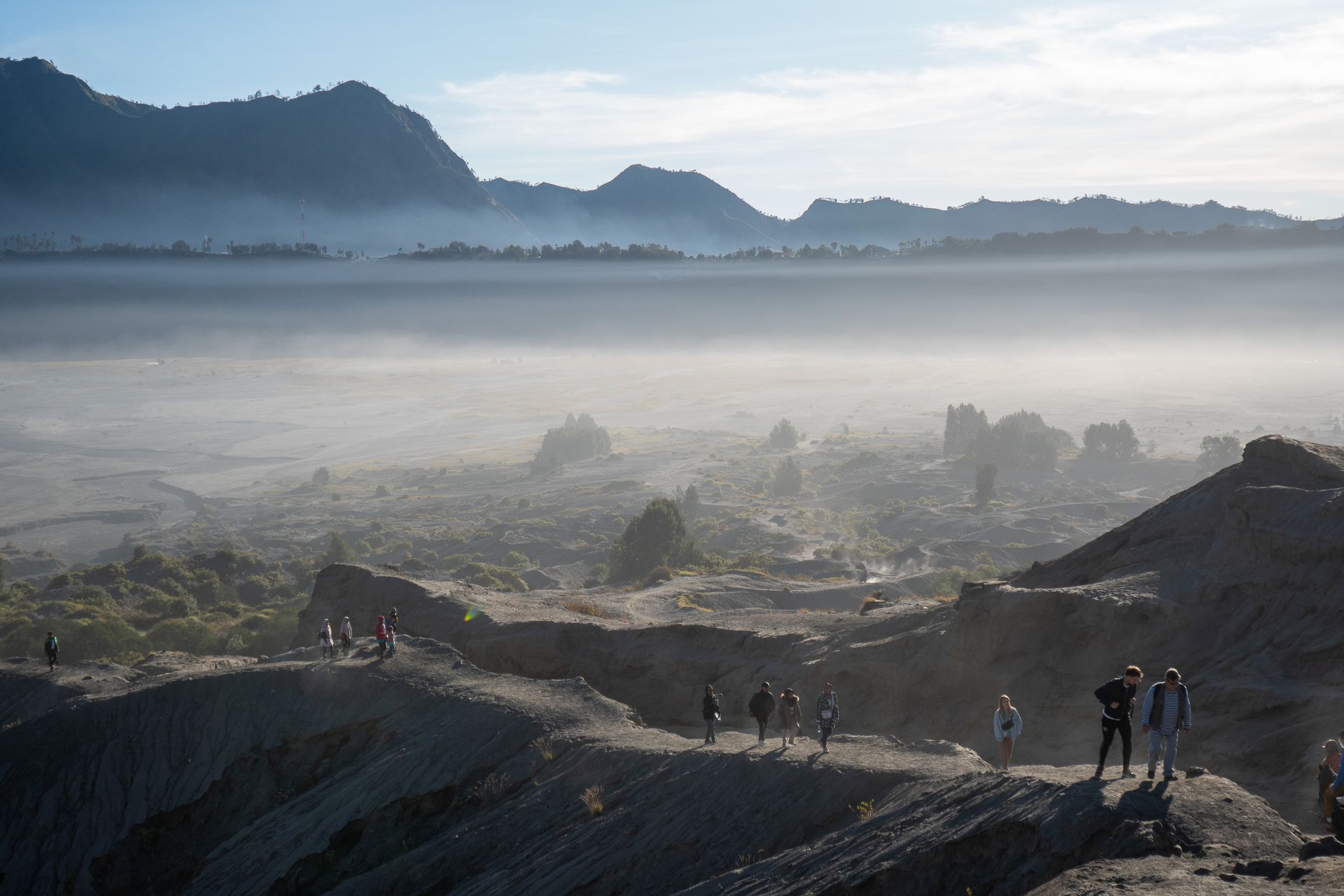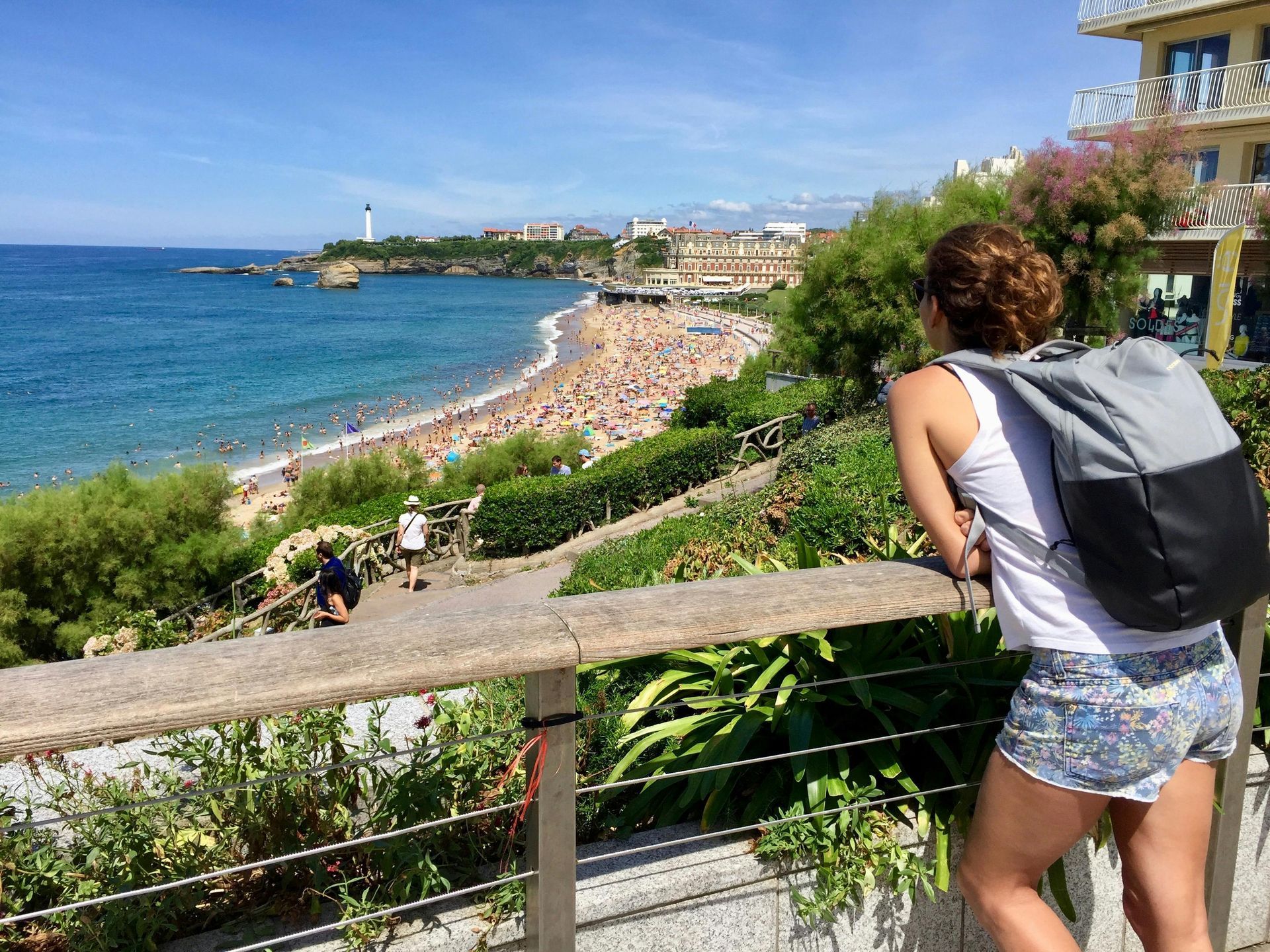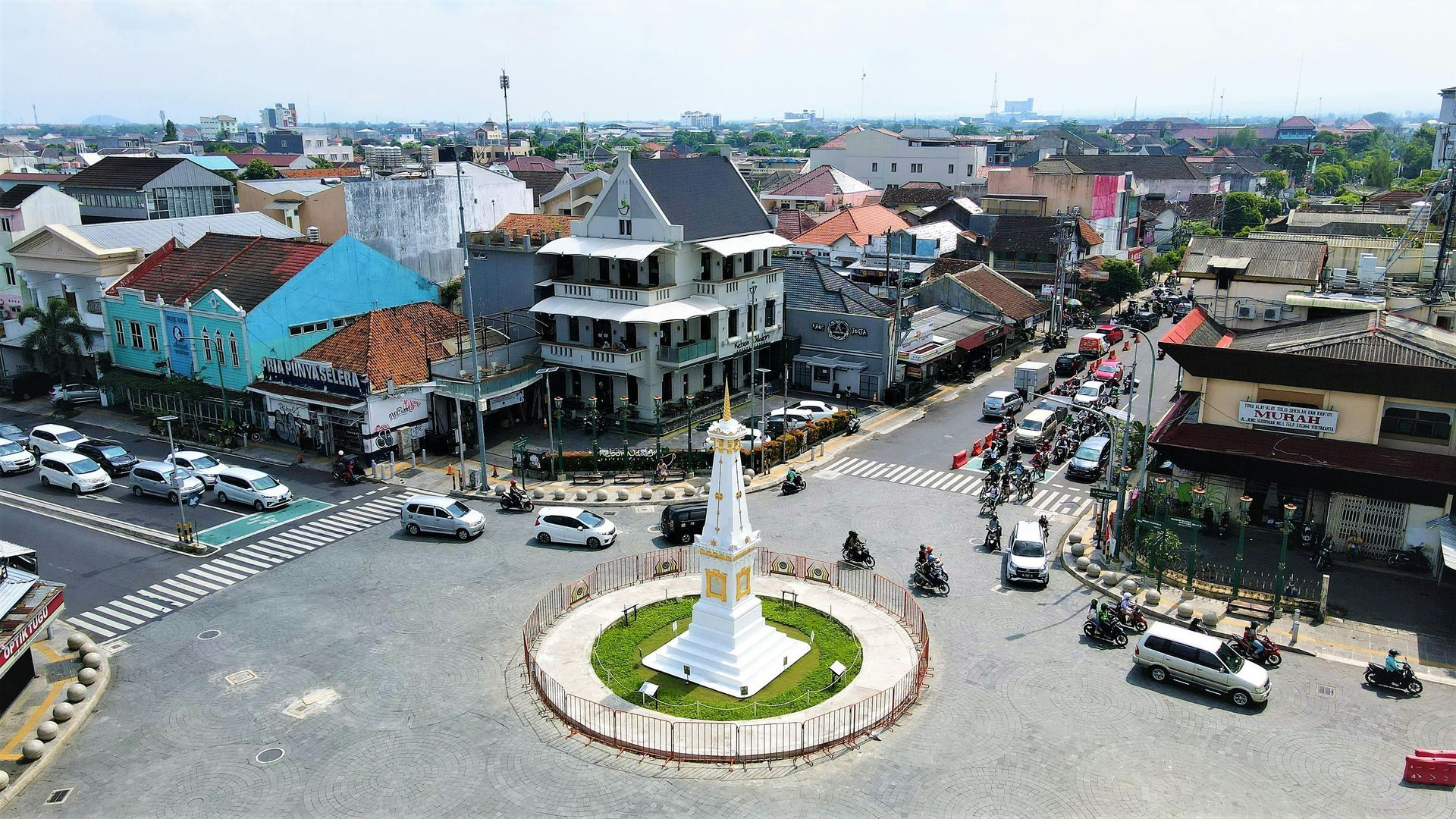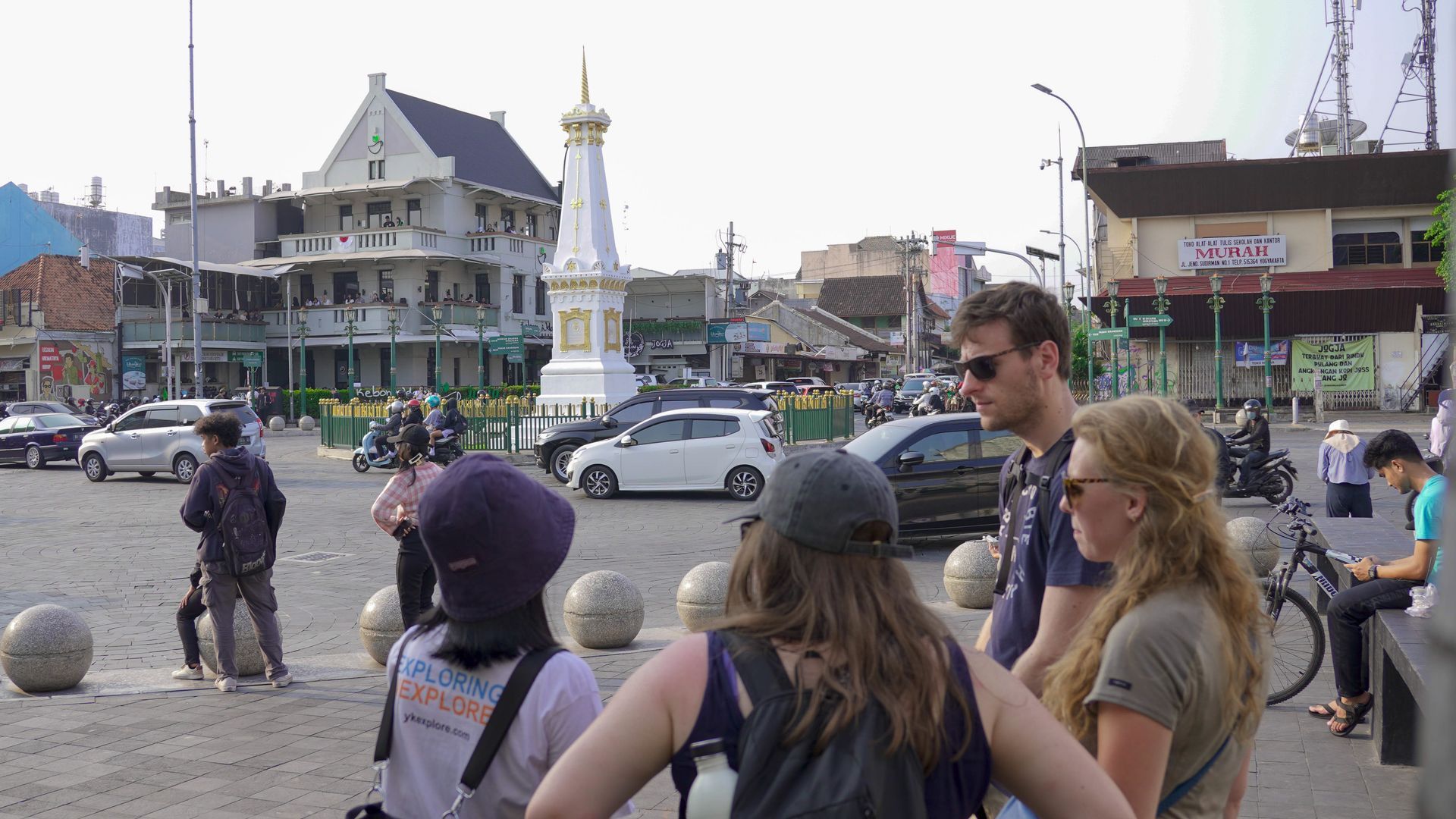Exploring the Mysteries of Borobudur Temple
Exploring the Mysteries of Borobudur Temple
Nestled in the heart of Central Java, Indonesia, lies the awe-inspiring Borobudur Temple. This ancient marvel is a testament to human ingenuity and spiritual devotion.
Borobudur Temple is the largest Buddhist temple in the world. It stands as a symbol of Indonesia's rich cultural heritage.
Constructed in the 8th and 9th centuries, it reflects the grandeur of the Sailendra Dynasty. The temple's design is a masterpiece of architecture and symbolism.
Borobudur is shaped like a mandala, representing the universe in Buddhist cosmology. Its intricate reliefs and statues tell stories of Buddha's life and teachings.
The temple was abandoned in the 14th century, only to be rediscovered centuries later. Today, it is a UNESCO World Heritage site, drawing millions of visitors each year.
Borobudur's mysteries continue to intrigue historians and archaeologists. Its construction techniques and original purpose remain subjects of debate.
Visitors are captivated by its serene atmosphere and breathtaking views. The temple's spiritual significance resonates with people from all walks of life.
Join us as we explore the mysteries and marvels of Borobudur Temple.

Where is Borobudur Temple Located?
Borobudur Temple is situated in Magelang, Central Java, Indonesia. The temple sits majestically amidst lush rice fields and distant mountains. This location offers picturesque views and a sense of tranquility.
Central Java is renowned for its rich history and cultural significance. Borobudur lies approximately 40 kilometers northwest of Yogyakarta, a vibrant city known for its arts and heritage. The temple's strategic position provides easy access to travelers exploring Java.
Visitors can enjoy the temple's serene surroundings while also exploring nearby attractions. The area around Borobudur offers:
- Stunning landscapes with volcanic backdrops
- Cultural and historical sites such as Mendut and Pawon Temples
- Opportunities for local culinary experiences in nearby villages
Reaching Borobudur Temple is a journey through the beauty of Java. Travelers can choose from various modes of transport, including buses, cars, and tours. As they approach, the awe-inspiring architecture of Borobudur becomes a focal point, captivating the imaginations of all who visit.
Where is Borobudur Temple Located?
Borobudur Temple is situated in Magelang, Central Java, Indonesia. The temple sits majestically amidst lush rice fields and distant mountains. This location offers picturesque views and a sense of tranquility.
Central Java is renowned for its rich history and cultural significance. Borobudur lies approximately 40 kilometers northwest of Yogyakarta, a vibrant city known for its arts and heritage. The temple's strategic position provides easy access to travelers exploring Java.
Visitors can enjoy the temple's serene surroundings while also exploring nearby attractions. The area around Borobudur offers:
- Stunning landscapes with volcanic backdrops
- Cultural and historical sites such as Mendut and Pawon Temples
- Opportunities for local culinary experiences in nearby villages
Reaching Borobudur Temple is a journey through the beauty of Java. Travelers can choose from various modes of transport, including buses, cars, and tours. As they approach, the awe-inspiring architecture of Borobudur becomes a focal point, captivating the imaginations of all who visit.
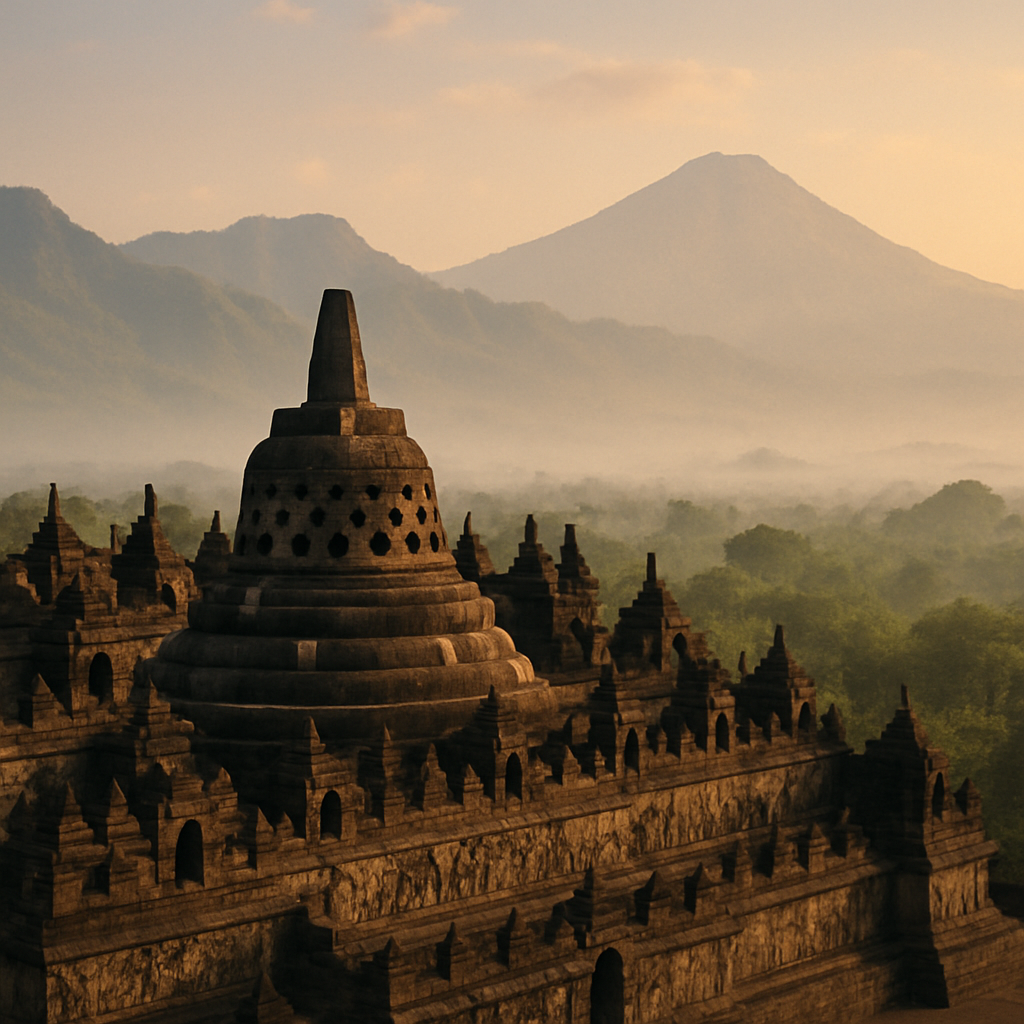
The History and Time Period of Borobudur Temple
Borobudur Temple traces back to the 8th and 9th centuries. It was constructed under the guidance of the Sailendra Dynasty, which ruled over Java. This period marked a flourishing era for Buddhism in the Indonesian archipelago.
The construction of Borobudur is believed to have spanned over several decades. It's thought that the temple was completed around 825 AD. The influence of Indian Gupta art and Javanese elements is evident in the temple's intricate design.
During the 14th century, the temple was mysteriously abandoned. Historians suggest this coincided with the rise of Islam in the region. Over the centuries, the temple fell into obscurity and was gradually overtaken by the lush jungles.
Borobudur remained forgotten until its rediscovery in the 19th century. Sir Thomas Stamford Raffles, the then British ruler of Java, uncovered the temple in 1814. His interest brought renewed attention to this architectural marvel.
To summarize the temple's historical trajectory:
- Construction began: 8th century under Sailendra Dynasty
- Completion: Estimated around 825 AD
- Abandonment: 14th century due to religious shifts
- Rediscovery: 19th century by Sir Thomas Stamford Raffles
Borobudur's history is a testament to the dynamic cultural exchanges in Southeast Asia. Its story is one of transformation and rediscovery, reflecting profound shifts in religious and cultural landscapes over time.
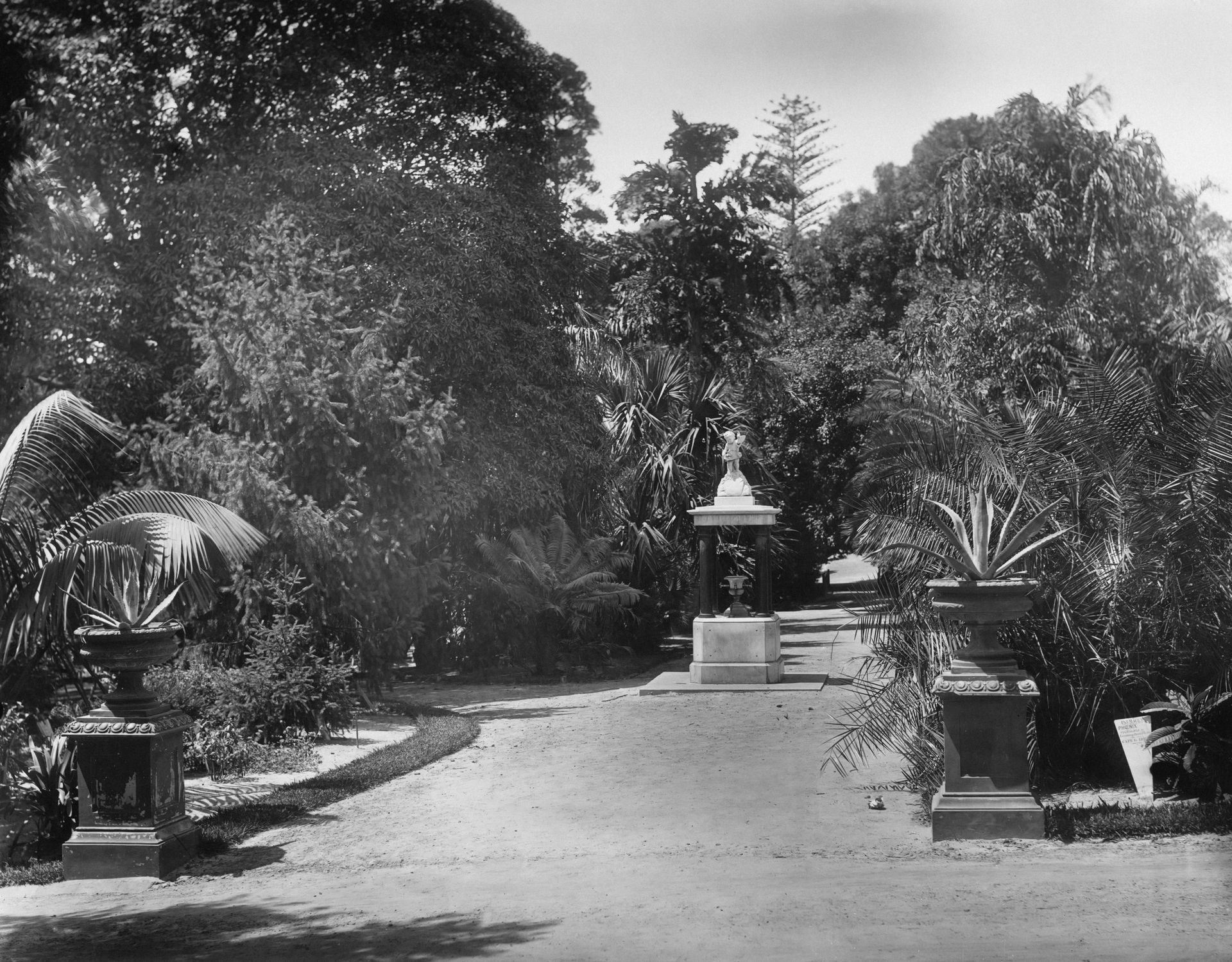
Architecture and Design: The Marvel of Candi Borobudur
Candi Borobudur stands as a masterpiece of ancient engineering and art. This grand structure is the world’s largest Buddhist temple, showcasing unique architectural features.
The temple is designed in the shape of a mandala, symbolizing the Buddhist cosmos. The layout comprises nine stacked platforms, six square at the base, and three circular at the top. These layers represent a spiritual journey from earthly desires to enlightenment.
Atop the three circular terraces, a central dome rises majestically. This dome is surrounded by 72 seated Buddha statues inside perforated stupas. The placement of these stupas adds a rhythmic harmony to the temple's design.
The walls and balustrades of Borobudur are adorned with 2,672 relief panels. These detailed carvings offer narratives of Buddha’s life and moral teachings. They serve as a visual scripture for devotees and historians alike.
The construction used over two million volcanic stones, crafted in an interlocking system. This method provided durability, helping the temple withstand the test of time and natural disasters.
Key architectural features include:
- Mandala design symbolizing Buddhist cosmology
- Nine platforms: Six square and three circular
- Central dome with 72 Buddha statues in stupas
- Walls with 2,672 narrative relief panels
- Interlocking volcanic stone construction
Borobudur's design not only reflects Indian influences but also embodies Javanese architectural principles. The amalgamation creates an aesthetic that is both grand and meaningful.
The temple's alignment with Mount Merapi, an active volcano, and Mount Sumbing further enhances its mystical allure. This alignment adds to the architectural wonder and sacred ambiance of Borobudur.
In summary, Candi Borobudur is a monument not just of religious devotion but also of human creativity and resilience. Its intricate design and skilled craftsmanship continue to captivate visitors from around the world, leaving an indelible impression on those who witness its grandeur.
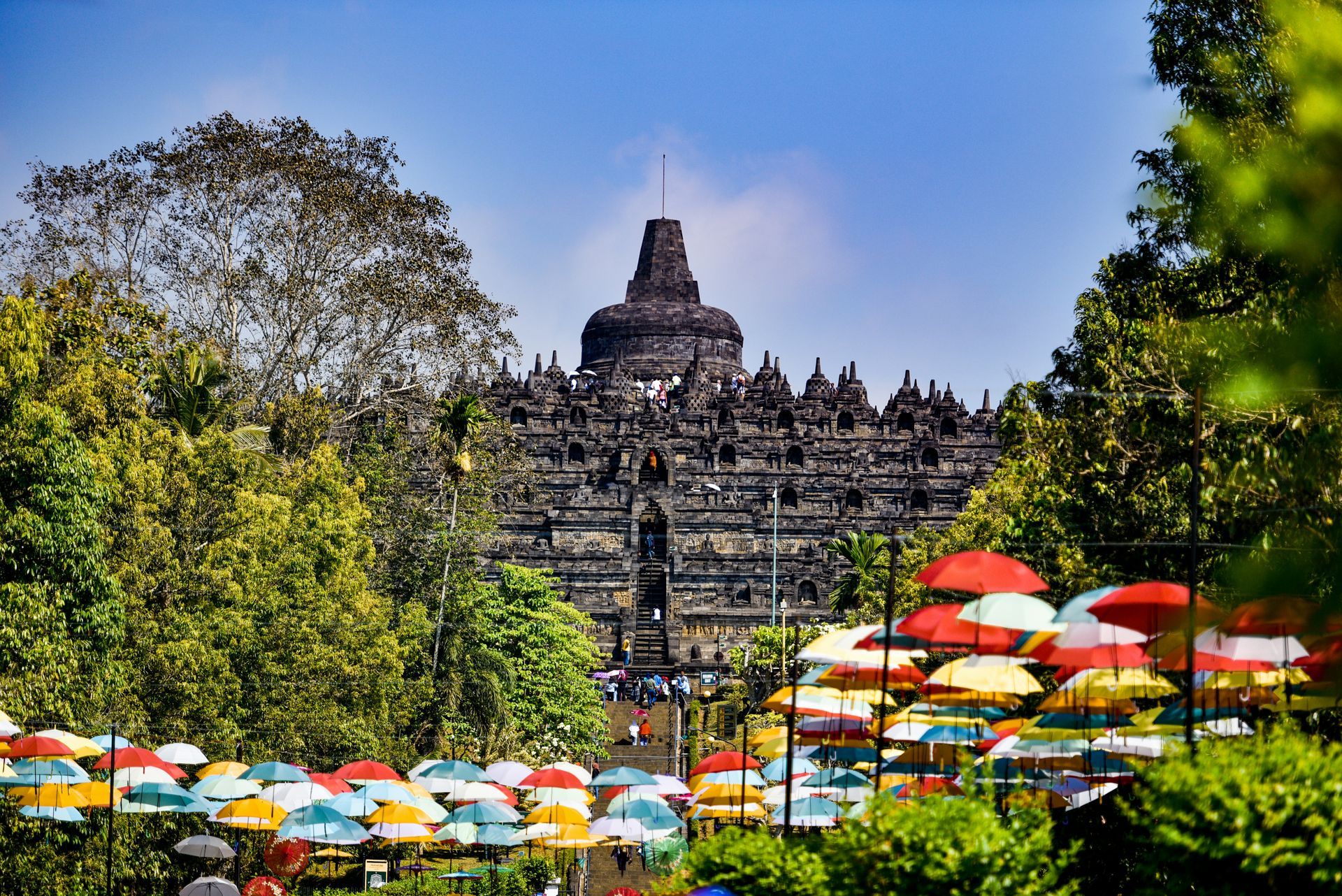

Symbolism and Spiritual Significance
Borobudur Temple is a significant symbol of the Buddhist path to enlightenment. Its architecture and carvings embody deep spiritual meanings.
The temple’s nine stacked platforms symbolize the stages one undergoes on the journey towards nirvana. Each level is aligned with specific spiritual states, encouraging introspective reflection.
Ascending Borobudur is akin to ascending through the layers of Buddhist cosmology. Starting from the base, the reliefs depict worldly desires, while the upper levels focus on spiritual teachings and tranquility.
Central to Borobudur’s spiritual essence is the sacred mandala design. This geometric form is a tool in Buddhist meditation, representing the universe's wholeness. It guides practitioners towards balance and unity.
Symbolically, the structure's components represent:
- Kamadhatu: The realm of desires
- Rupadhatu: The realm of forms
- Arupadhatu: The formless realm
At the summit is the central dome, signifying ultimate enlightenment. Surrounded by stupas, each housing a Buddha statue, it exudes serenity and spiritual fulfillment.
Despite the temple’s age, its spiritual resonance persists. Devotees and visitors engage in meditation and rituals, embracing Borobudur as a center of worship and inspiration.
Borobudur, with its intricate design, reflects an amalgamation of art, faith, and cosmic symbolism. This harmony elevates it beyond a mere monument, transforming it into a beacon of spiritual wisdom.
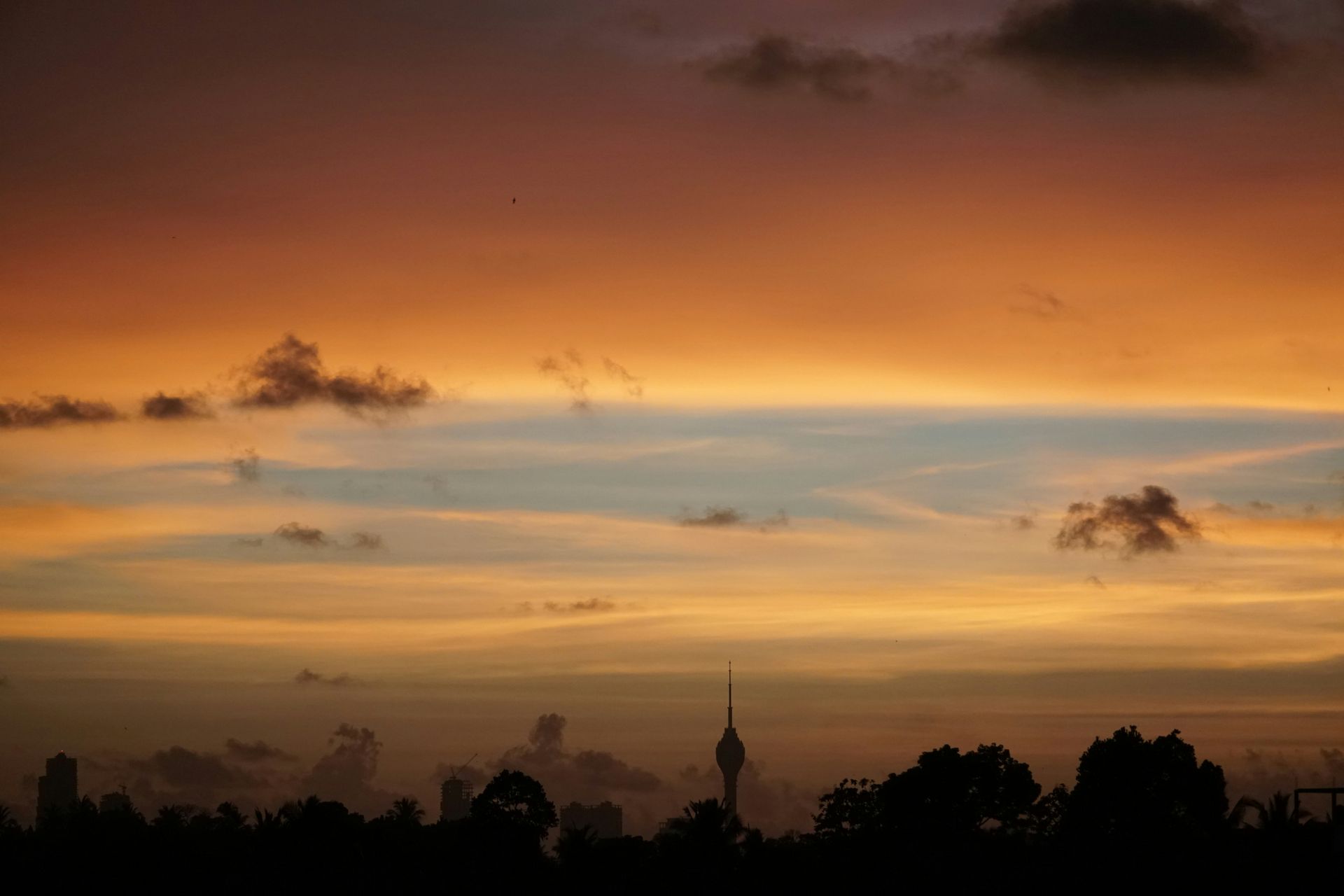
The Reliefs and Buddha Statues of Borobudur
The artistic reliefs of Borobudur Temple are an exquisite display of ancient craftsmanship. Carved into the temple’s walls, these intricate panels convey Buddhist teachings and Javanese life.
The temple boasts 2,672 relief panels. Each one tells tales of the Buddha’s life and his journey towards enlightenment. Visitors can follow these stories, marveling at both detail and breadth of the narratives.
Beyond storytelling, the reliefs offer insights into ancient life. Scenes depict societal structures, customs, and attire, providing a visual archive of the era. They reveal the community’s interaction with nature and divinity.
Complementing the reliefs are the numerous Buddha statues. The temple features 504 statues, each in serene meditation. Nestled within stupas, they portray various hand gestures or mudras, each symbolizing different aspects of Buddhist philosophy.
Key points about Borobudur’s artistry include:
- Narrative Panels: Depictions from the Jataka tales and Mahayana Buddhist scriptures
- Life Depictions: Everyday Javanese activities and ceremonies
- Buddha Statues: Represent wisdom and compassion in distinct postures
Together, the reliefs and statues encapsulate a spiritual journey, inviting reflection and inspiration. Visitors often feel a sense of peace and transcendence, drawn by the serenity that emanates from Borobudur’s artistic expressions.
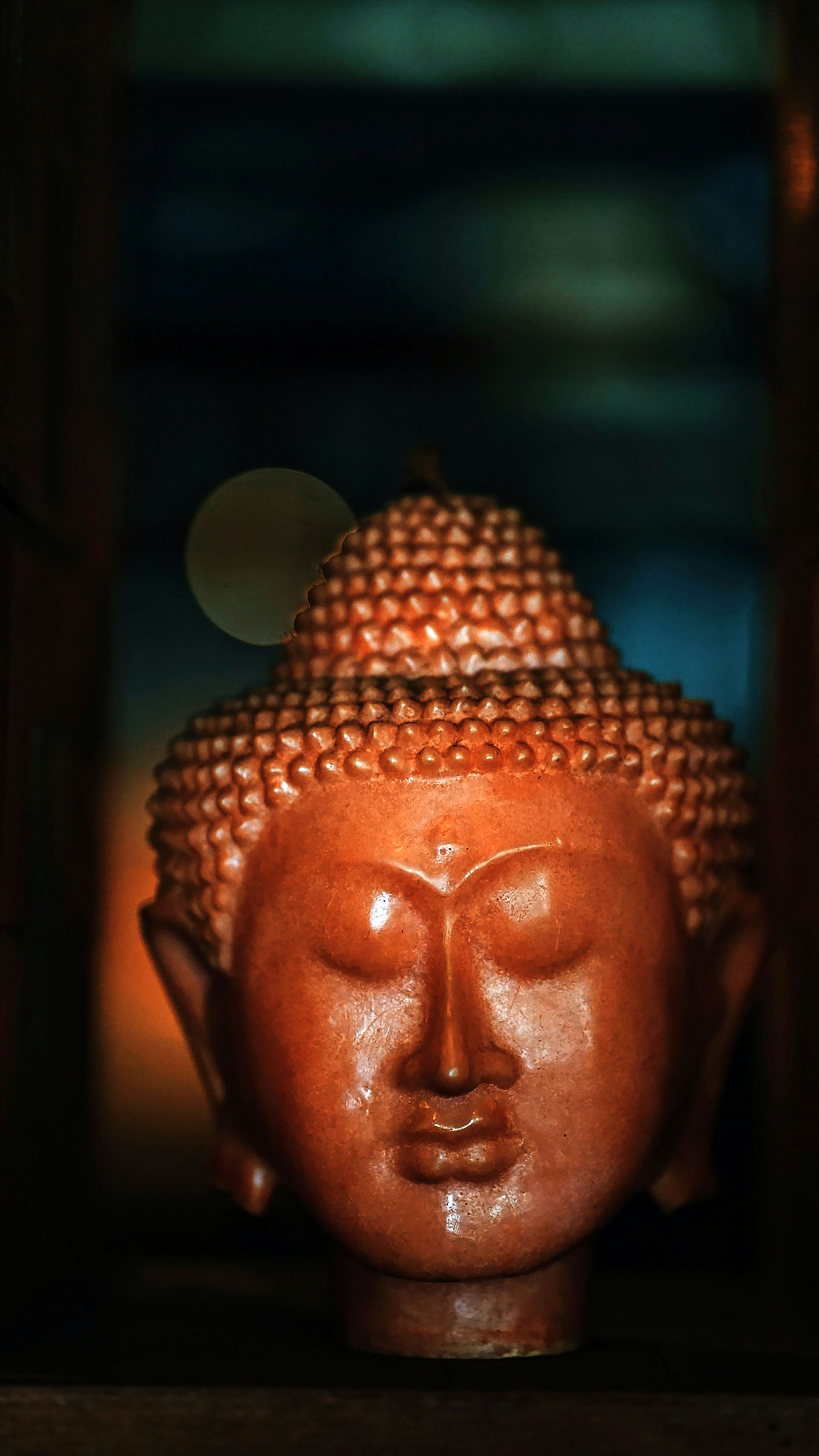
Rediscovery, Restoration, and UNESCO World Heritage Status
Borobudur Temple, long forgotten, was rediscovered by the world in the 19th century. Sir Thomas Stamford Raffles, the British ruler of Java, stumbled upon it during his travels. Buried under volcanic ash and jungle overgrowth, the temple was unveiled in stages.
Restoration efforts began soon after its rediscovery. Initial attempts were modest, lacking modern techniques or resources. However, significant progress was made in the 20th century, with technological advancements aiding conservation.
UNESCO played a crucial role in ensuring the temple's preservation. During the 1970s and 1980s, it spearheaded a major restoration project. This collaboration involved international experts, showcasing a shared commitment to saving Borobudur's cultural treasures.
In 1991, the temple gained recognition as a UNESCO World Heritage site. This status not only highlights its global significance but also ensures ongoing protection.
Important points about Borobudur's restoration journey:
- Rediscovery: By Sir Thomas Stamford Raffles in the 19th century
- Initial Preservation: Early conservation efforts lacked modern methods
- UNESCO Involvement: Led extensive restorations in the late 20th century
- World Heritage Status: Granted in 1991, ensuring continued preservation
Today, Borobudur stands as a testament to collaborative restoration efforts. It continues to inspire awe, its grandeur and history preserved for future generations.

Mysteries and Unanswered Questions
Borobudur Temple, while magnificent, remains enigmatic in many respects. Its original purpose is a subject of debate among historians. Was it merely a religious monument, or did it serve other functions?
Despite extensive studies, aspects of its construction are still puzzling. How ancient builders transported massive stones remains unclear. The precision achieved without modern tools suggests advanced knowledge.
The symbolism behind Borobudur's design also invites speculation. Some believe it represents a model of the Buddhist cosmology, yet others propose different interpretations. The temple's intricate patterns suggest layers of spiritual meaning.
Several questions continue to intrigue researchers:
- Purpose: Beyond a religious site, what other roles did it play?
- Construction: What methods did ancient builders use?
- Symbolism: How deep and varied are its symbolic meanings?
Borobudur's mysteries add to its allure, drawing scholars and enthusiasts alike. They come seeking answers while basking in its historical ambiance. Each visit and study unveils new insights, yet many secrets of Borobudur remain tantalizingly out of reach.
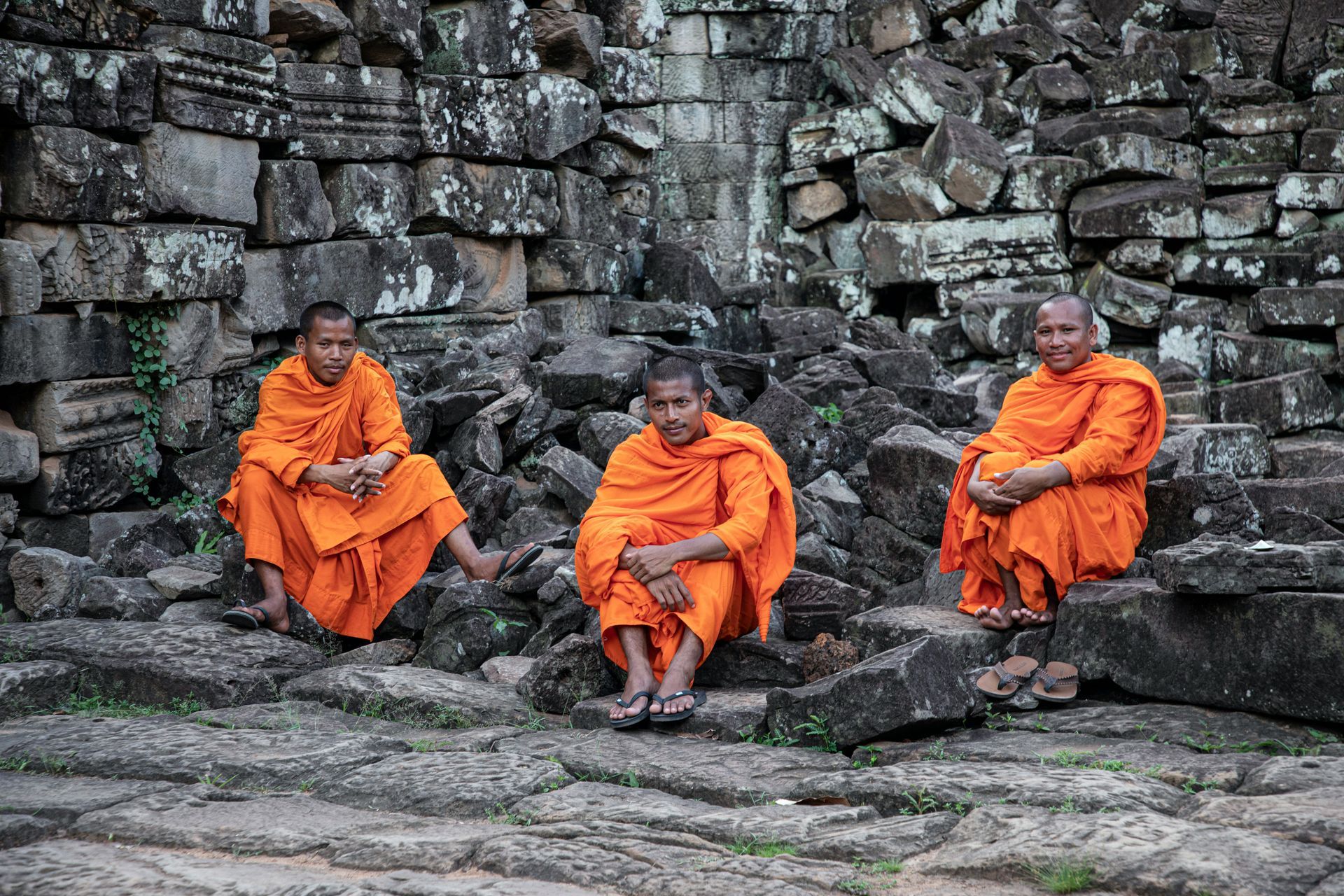
Visiting Borobudur: What to See and Do
Visiting Borobudur is an unforgettable experience steeped in history and spirituality. Start your journey at sunrise when the sun casts a magical glow over the temple. This time offers a tranquil atmosphere, perfect for reflection and exploration.
As you wander through the temple's levels, you will discover intricate stone carvings. Each relief tells stories of Buddha's life, rich in cultural and historical significance. Climbing to the top rewards you with breathtaking views of lush landscapes and distant mountains.
Don't miss these highlights during your visit:
- Sunrise Tour: Capture stunning photos as the day begins.
- Meditation Sessions: Experience peace amidst ancient grandeur.
- Relief Panels: Unravel historical and spiritual narratives.
- Central Dome: Marvel at the stupas and Buddha statues.
Travelers should also visit nearby temples, like Mendut and Pawon. These lesser-known sites enhance Borobudur's context within Javanese culture. Exploring the surroundings offers insight into the region's spiritual heritage and natural beauty.
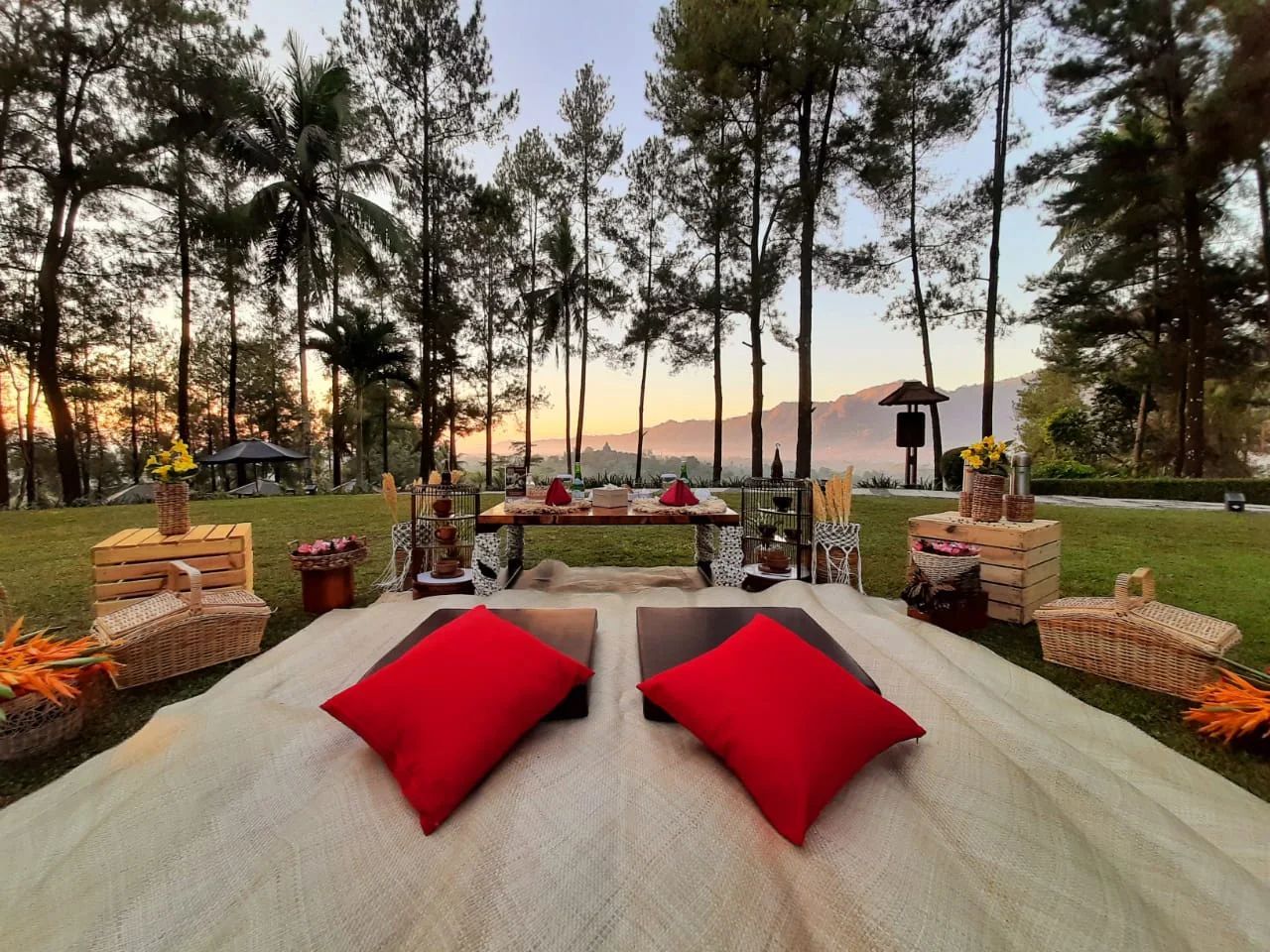
Borobudur in Modern Indonesia: Culture, Tourism, and Preservation
Borobudur Temple stands as a cultural beacon in Indonesia today. It symbolizes the nation's rich heritage and draws countless visitors. Each year, millions come to witness its architectural grandeur and spiritual legacy.
Indonesia's government and various organizations focus on preserving Borobudur. Conservation efforts balance the influx of tourism with maintaining its historical integrity. This ensures the temple remains a lasting landmark for future generations.
Beyond its historical significance, Borobudur influences contemporary Indonesian culture. It serves as a source of inspiration across art, education, and tourism. Visitors leave with a deeper understanding of Indonesia's diverse cultural landscape.
Key aspects of Borobudur's modern significance include:
- Cultural Festivals: Promoting local traditions and arts.
- Tourism Boost: Supporting local economies and services.
- Educational Programs: Teaching about heritage and history.
- Conservation Initiatives: Preserving the site for future generations.
Through these efforts, Borobudur continues to thrive as a symbol of peace and unity. Its presence enhances understanding and appreciation of Indonesia's vibrant past and evolving future.
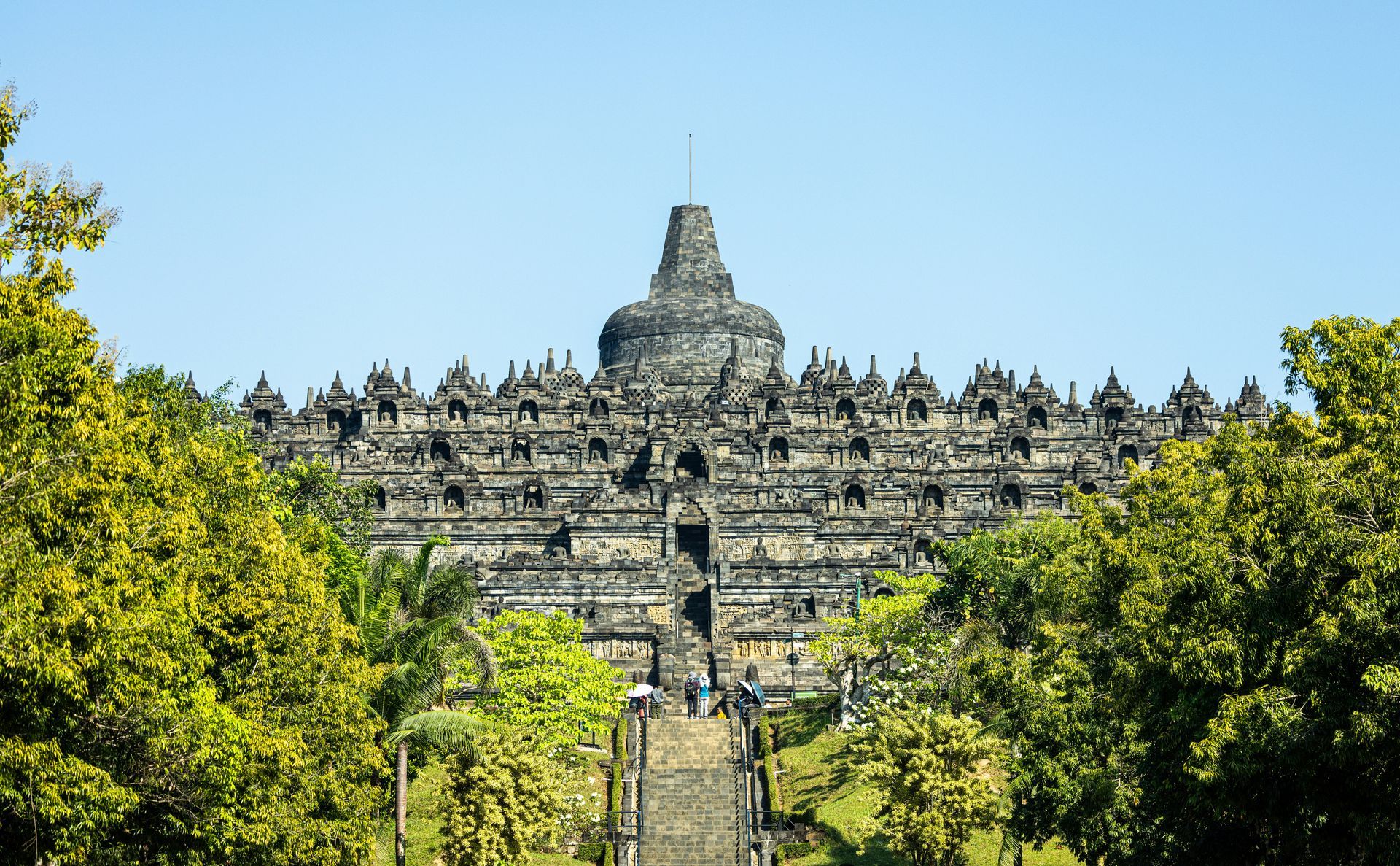
Conclusion: The Enduring Legacy of Borobudur Temple
The legacy of Borobudur Temple reaches far beyond its stone walls. It stands as a testament to human creativity, spirituality, and resilience. This ancient marvel inspires awe, drawing individuals from around the globe.
As a UNESCO World Heritage site, Borobudur represents a link between past and present. Its preservation underscores the collective efforts to honor and maintain our world's cultural treasures. Through ongoing conservation, it thrives as a beacon of Indonesia's proud heritage.
The temple is more than a relic of history; it is a living testament to universal themes of peace and enlightenment. Borobudur continues to guide and inspire, reminding us of the shared human journey toward greater understanding. Its timeless presence invites reflection and admiration, ensuring its story endures for generations to come.













